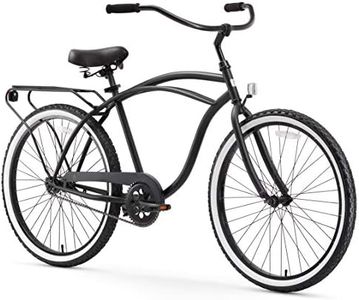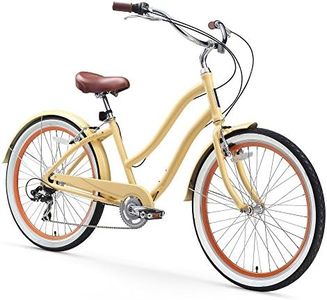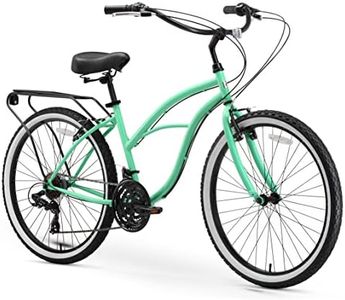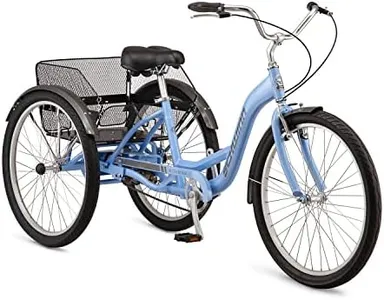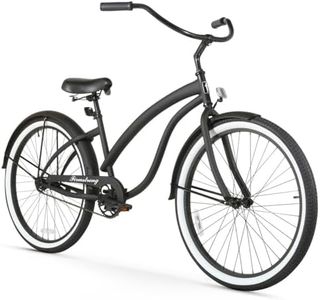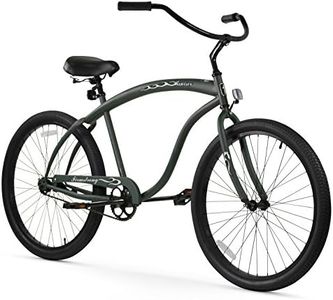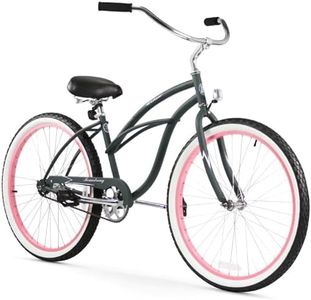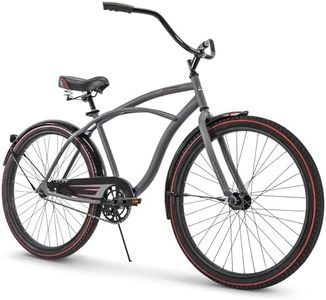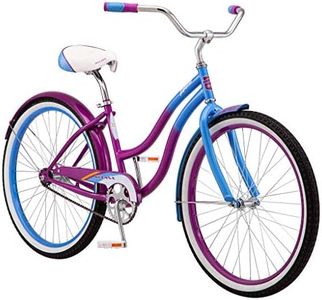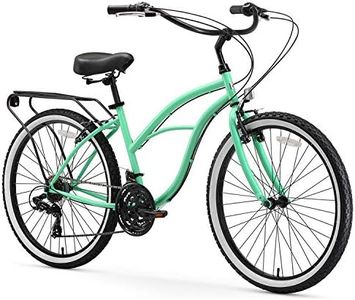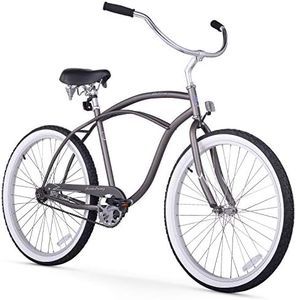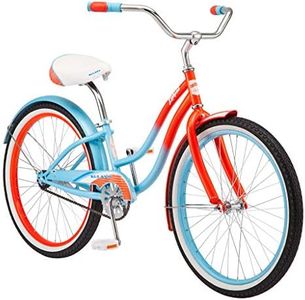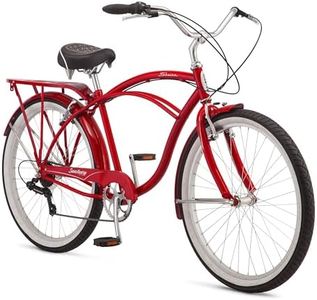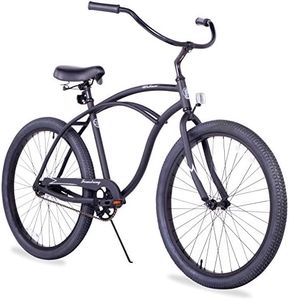We Use CookiesWe use cookies to enhance the security, performance,
functionality and for analytical and promotional activities. By continuing to browse this site you
are agreeing to our privacy policy
10 Best Beach Cruisers
From leading brands and best sellers available on the web.Buying Guide for the Best Beach Cruisers
Choosing the right beach cruiser bike is all about understanding your needs and the environments where you’ll be riding. Beach cruisers are designed for comfort and leisure rather than speed or technical riding. When picking your ideal cruiser, focus on how and where you plan to use it—do you want a fun ride on boardwalks, regular use around your neighborhood, or maybe occasional rides on sand? By thinking about your comfort, style, and intended usage, you’ll find a beach cruiser that makes each ride enjoyable and easy.Frame MaterialThe frame material of a beach cruiser refers to what the main structure of the bike is made from, and this impacts weight, comfort, and durability. The most common options are steel, aluminum, and sometimes composite materials. Steel frames are usually heavier but give a smooth, stable ride and tend to be long-lasting. Aluminum is lighter, which makes it easier to handle and less prone to rust—this can be important if you're often near salty ocean air. If you plan to ride casually and store your bike indoors, either will work, but people who expect to lift the bike often or leave it outside may prefer aluminum for its lightness and resistance to corrosion.
Wheel Size and TypeWheel size on beach cruisers typically ranges between 24 and 26 inches. Larger wheels (26 inches) roll more smoothly and are best suited for taller riders or those who plan to cover slightly longer distances. Smaller 24-inch wheels can be popular for shorter riders or those who want a lower, more stable ride. Tire width also varies—wide balloon tires are typical for cruisers, giving stability and comfort over sand or bumpy boardwalks. If you ride mostly on packed sand or smooth pavement, standard wide tires will offer a smooth ride, but if you often encounter loose sand or gravel, going wider can help with grip and control.
GearingBeach cruisers come with different gearing setups: single-speed, three-speed, and sometimes seven-speed systems. Single-speed bikes are the simplest, easy to maintain, and are great for flat areas. Three-speed and seven-speed options give you extra gears for handling hills or longer rides, making it easier to pedal in different conditions. If you live in a mostly flat area and just want a low-maintenance ride, single-speed may be perfect—but if you face hills or want more flexibility, look at multi-speed options.
BrakesBrake type determines how you stop the bike and affects ease of use and maintenance. Coaster brakes (pedal backward to stop) are classic for cruisers and keep things simple, as there are no hand levers. Hand brakes (on the handlebars) offer more precise control, especially if you’re riding at faster speeds or on hilly terrain. Choose coaster brakes for laid-back, easy riding and simple maintenance, but consider hand brakes if you want extra responsiveness or will ride in more mixed environments.
Seat and Handlebar DesignThe design of the seat (saddle) and type of handlebars influences riding comfort and posture. Beach cruisers are known for their wide, padded seats and sweeping, upright handlebars that promote a relaxed, upright position—taking pressure off your back and wrists. If you prioritize comfort, look for an extra-cushioned seat and handlebars that don’t force you to lean forward. If you prefer a bit more control (for longer or faster rides), a slightly sportier setup might suit you better. Always consider how the seating and handlebars will feel during the length of ride you expect to enjoy most.
Additional FeaturesSome cruisers offer extras like fenders, baskets, racks, or even built-in lights. Fenders help keep you clean if you ride through puddles or wet sand, and baskets or racks can be handy for carrying beach gear or groceries. Think about the kinds of trips you plan—if you need to carry things often, these features are useful; if you prefer a simpler, lighter bike, you might skip them.
